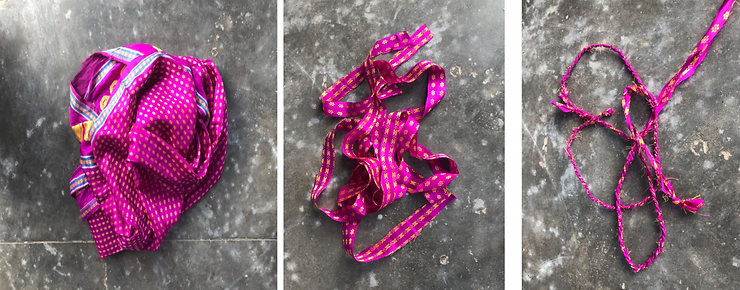A fascinating revival of the traditional charpai of India
Going Back In Time
The history of this timeless piece of furniture dates back to approximately 5000 years ago, though, no one is relatively sure about where or when exactly it originated. The charpoy literally means four-legged and represents the same. It was generally used as a daybed as well as for sleeping. The four posts of equal heights made it self-levelling and thus, a simplistic marvel. In India, the charpai was built using varieties of weaving types from diagonal to cross to linear weaving. Each culture and community had their own ‘traditional’ way of making it sturdy and stylish.
The charpoy soon gained popularity among people from all walks of life due to its simplicity, charm and of course, practicality. It became a part of the daily lifestyle among Indians as it was found in almost every room of the household. It also featured in various Hindu rituals, from birth till death.
The charpoy had helped entire households generate an economic ecosystem of their own. Families who wove the charpoys, occupationally, soon started planting crops that would yield the fibres for the ropes. Family members would sit together in their spare time, day and night, to simply weave. A lazy summer evening would imply simply idling by on the charpoy under a mango tree or in the courtyard, after a sultry day in the fields. This sentiment is what placed this piece of furniture at the heart of Indian culture.
A Dying Craft

Despite its extensive usage throughout the country, the weaving of the charpoy soon became a dying craft. The reason for this, as is in most cases, was the introduction of better and more importantly, long-lasting products like the wooden double bed. A slight disadvantage of the charpoy in comparison to these beds was that with repeated use, the woven portion would start sagging and eventually, it would not be in working condition. Nowadays, it has disappeared even from most of the rural households as it is cheaper and easier to acquire beds made from iron and nylon. Like all things great, culture was eventually lost to convenience.
Revival

The Skilled Samaritan Foundation is a NPO working with women from rural regions in North India to provide sustainable and fashionable lifestyle products. They have taken an oath of revival on behalf of the traditional Indian charpoy. They identify unique individuals with an unparalleled skill set in the traditional art of weaving and help them design and market products for the urban and global consumers.
The traditional charpoys were made in three simple steps: The available fibre is first spun into yarns using the spinning wheel and similar mechanisms. Next, the yarn is knitted into ropes. Lastly, the ropes are woven into the charpoy using distinct styles and techniques. SSF uses the same approach but with a few twists of the rope!
Instead of only using natural fibre materials, they combine various types of sustainable materials like cotton cords, jute and banana fibres with reusable waste products like textile waste and multi-layer packaging plastic waste. What this basically does is that it saves the environment from a whole lot of trouble by reducing carbon emissions that would otherwise be in our lungs right now. Yay!
SSF is actively working in the return of this age-old marvel known as a charpai that simply got lost in time. In doing so, they are also helping you reduce your carbon footprint by consuming responsibly. What’s better is that they’re doing all this while generating employment for women who never saw a life beyond household chores,
a chance to break barriers and bring about socio-economic change in their everyday life and that of their children.
-
You can check out our latest collaboration with the Alipore Post about the same and stand a chance to win exciting giveaways!
https://www.thealiporepost.com/post/charpai-pe-charcha-skilled-samaritan


0 comments